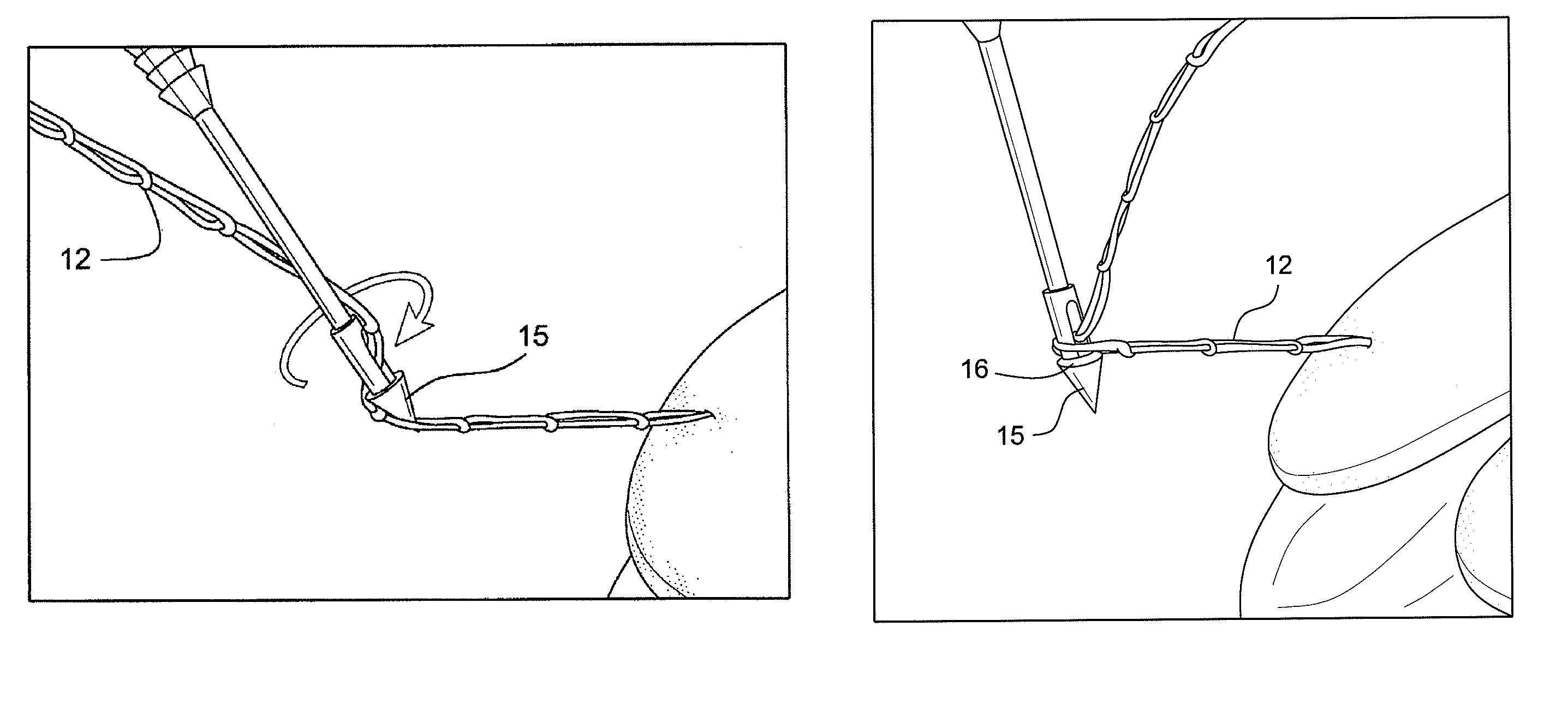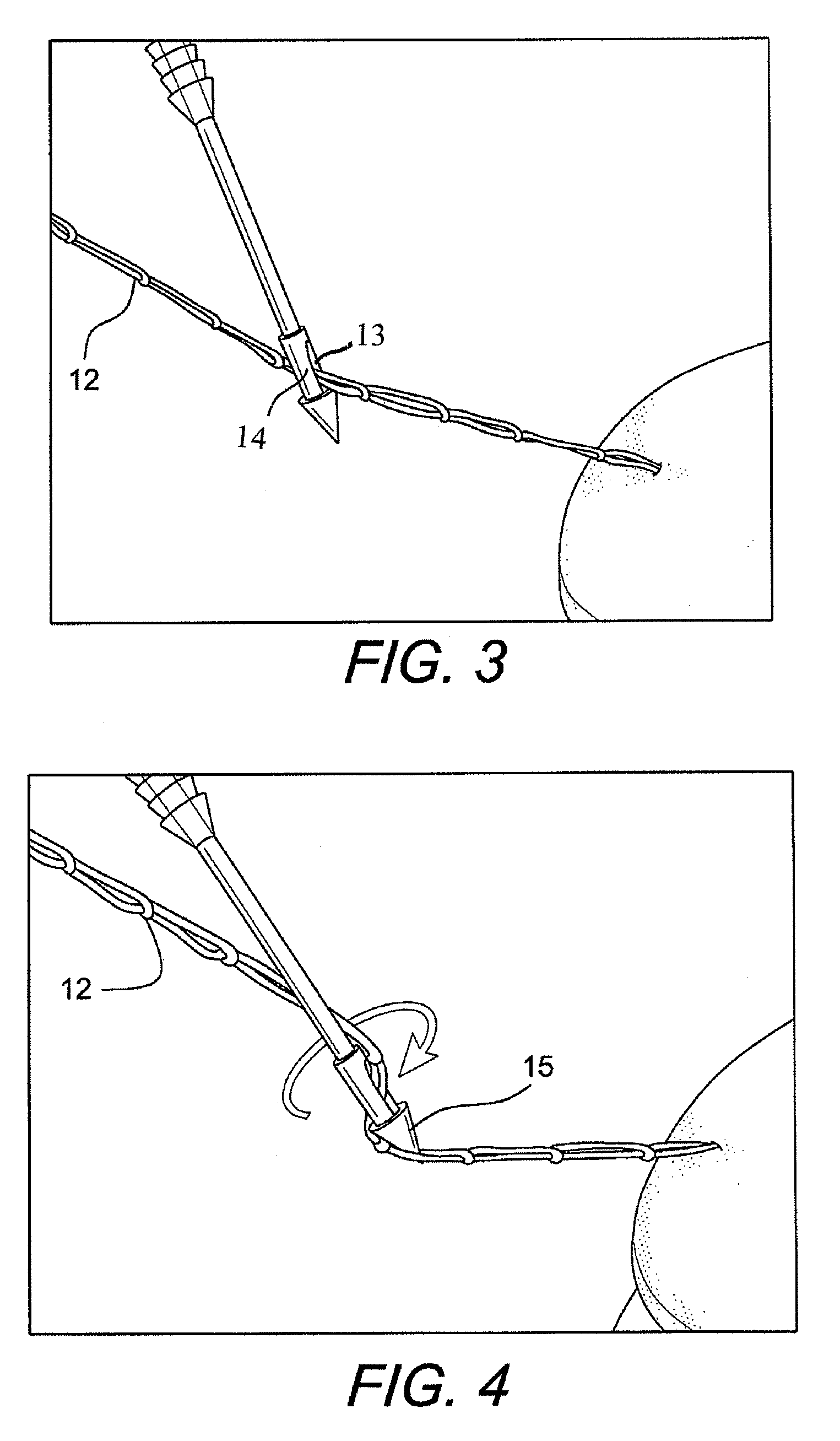Technique for tissue fixation by capturing and anchoring a link of suture chain attached to tissue
a tissue and suture chain technology, applied in the field of surgical fixation, can solve problems such as inability to achieve in situ surgical refinements, and achieve the effect of capturing and anchoring a link of suture chain attached to tissu
- Summary
- Abstract
- Description
- Claims
- Application Information
AI Technical Summary
Benefits of technology
Problems solved by technology
Method used
Image
Examples
Embodiment Construction
[0011]The present invention provides methods and apparatus for conducting anatomical tissue repair, such as ligament repair and reconstruction, by capturing and anchoring a link of suture chain attached to tissue.
[0012]The technique of the present invention utilizes a push-in type anchor (for example, a self-punching anchor) and a suture chain that includes a plurality of loops.
[0013]In one embodiment, a first portion of the suture chain is secured to the tissue to be fixated. The suture chain is next secured to the push-in type anchor (for example, by passing the suture chain through an eyelet of the anchor). The anchor is then advanced along the suture chain to bring a tip of the anchor above a chosen loop or link of the suture chain. The tip of the anchor is pushed through the chosen loop so that the tip locks the chosen loop in place (for example, by capturing both sides of the link above a shoulder of the anchor). With the captured link, the anchor is advanced into a pilot hole...
PUM
 Login to View More
Login to View More Abstract
Description
Claims
Application Information
 Login to View More
Login to View More - R&D
- Intellectual Property
- Life Sciences
- Materials
- Tech Scout
- Unparalleled Data Quality
- Higher Quality Content
- 60% Fewer Hallucinations
Browse by: Latest US Patents, China's latest patents, Technical Efficacy Thesaurus, Application Domain, Technology Topic, Popular Technical Reports.
© 2025 PatSnap. All rights reserved.Legal|Privacy policy|Modern Slavery Act Transparency Statement|Sitemap|About US| Contact US: help@patsnap.com



